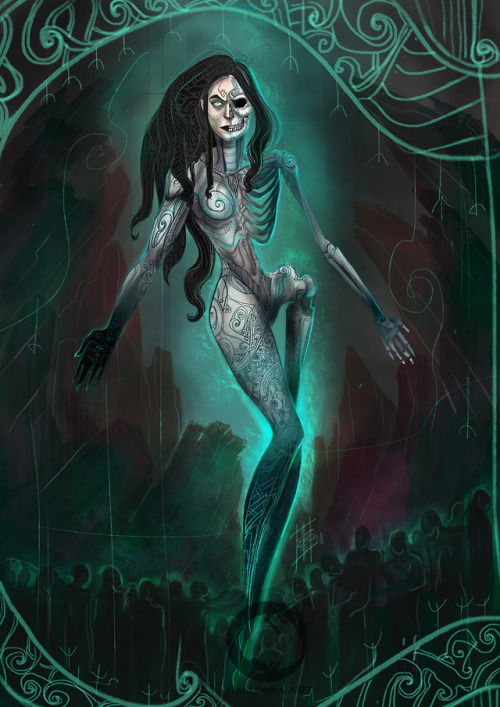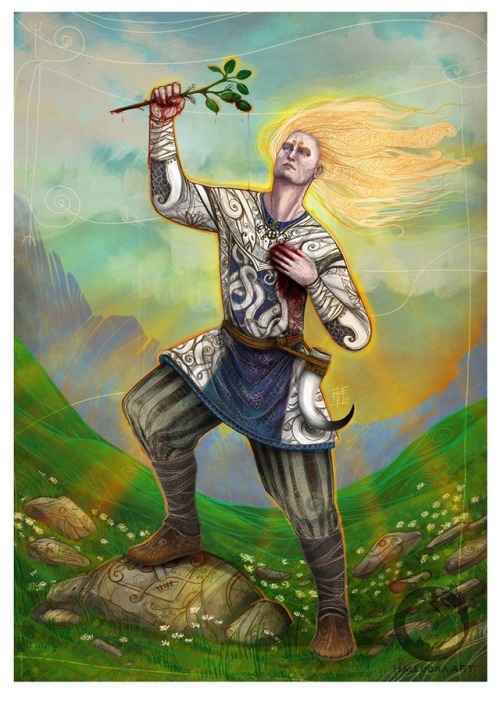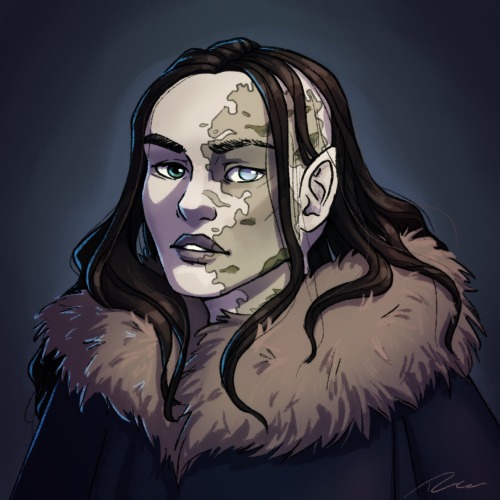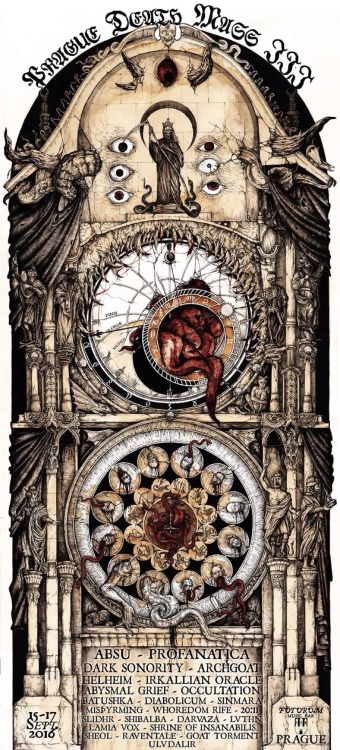#helheim
valhalla is not “the norse pagan heaven” hel is not “the norse pagan hell” and the edda is not “the norse pagan bible” <3
In fact, in Saxo Grammaticus’ account of the norse pagan afterlife (History of the Danes Book I), Helheim was described as a place of green and ever-lasting life. Correct me if I’m wrong but it would be, in this case, closer to what the judeo-christian heaven would look like according to many of their sources.
Helheim from all I’ve read was a very nice afterlife, and the biggest issue with it is that the name is close to the Christian Hell. Tbh most of the issues with Norse mythology / paganism / heathenry stem from trying to find/force parallels with Christian mythology.
⌘ Balder ⌘
—————————–
Balder, Old Norse Baldr, in Norse mythology, the son of the chief god Odin and his wife Frigg. Beautiful and just, he was the favourite of the gods. Most legends about him concern his death. Icelandic stories tell how the gods amused themselves by throwing objects at him, knowing that he was immune from harm. The blind god Höd, deceived by the evil Loki, killed Balder by hurling mistletoe, the only thing that could hurt him. After Balder’s funeral, the giantess Thökk, probably Loki in disguise, refused to weep the tears that would release Balder from death.
———————————–
Post link
Yggdrasil, the World Tree
By Simon E. Davies of Human Odyssey
In the beginning of the Norse cosmos, there existed an eternal Void, known as Ginnungagap. Out of this nothingness sprang Yggdrasil, a huge Ash tree. Its newly emerging branches held two primordial worlds; Niflheim, a world of ice & frost, and Muspellheim, a realm of molten fire.
When a spring erupted from Nifelheim (known as Hvergelmir), it created a river which crossed the void into Muspellheim. Here, the hot air scorched the freezing river creating a new world, known as Jotunheim, land of the giants.
From this bloodline of primordial beings came Odin, Vili and Ve, who despised the father of giants who ruled his people with malice and brutality. When the chance came, the brothers slew the frost giant, and from his body they created Midgard, a world of mortals. Surrounding this realm they placed a great ocean which nourished the roots of the great tree.
Yggdrasil grew ever higher, forming a new realm called Asgard, which is located on the highest branch of the world tree. This was where Odin, king of the Aesir would take his people to settle a new civilisation. It was said this race of gods brought culture and technology to the world of mortals via a great causeway called Bifrost.
Bifrost was a burning rainbow bridge, connecting Midgard (the world of mortals) with Asgard. This colourful overpass emerged from Himinbjörg, a mountain hall guarded over by the ever-vigilant Heimdall. This watchmen of the gods kept an eye on the mortals below, making sure no giants breached their homeland.
As Yggdrasil continued to grow, a new land emerged on one of its branches called Vanaheim. It was a land full of luscious forests and wild meadows. From this primal wilderness emerged a race of gods known as the Vanir. This tribal people lived near the coast, ruled by Njörðr, a seafaring god who loved wealth and magic, a trait common among his people.
A great tension broke out between the Vanir and the Aesir resulting in a long winded war. It eventually ended in a stalemate, so many of the gods sent their families as hostages to the opposing tribe to help bring them closer together. Njörðr’s son, Freyr, was placed in charge of Alfheim, homeland of the Elves. This class of god-like beings were said to be “more beautiful than the sun.”
These elves were also linked to another realm far below the Earth. Legend says a tribe from Alfheim were exiled from their homeland many eons ago, and eventually sought refuge with the dwarves of the underworld. These subterranean beings had build their homes around the roots of Yggdrasil, carving a network of labyrinths, mines and forges for their empire. They called it Niðavellir, and the elves, who skin eventually became black as night, called it Svartalfar.
All the beings of Yggdrasil, mortals, gods, dwarves and elves would eventually die, and their souls were destined for several realms. If the Aesir died valiantly in battle, they would find rest in Valhalla, for all others, Helheim was their inevitable destination. This dark and gloomy abode resided at the tip of Yggdrasil’s deepest root. This afterlife was ruled over by Loki’s daughter Hel, a strange being who was half black and half flesh-coloured, characterised by a gloomy, downcast appearance.
There are a number of sacred creatures which live within Yggdrasil. this includes the monstrous wyrm Níðhöggr who gnaws at the roots of Nifelheim, weakening the great tree of Yggdrasil. This frost dragon was also known for eating the corpses of the Nifelheim when found guilty of murder, adultery and oath-breaking.
Atop the highest branches of the world tree is perched a great eagle and his hawk companion Vedrfolnir, who sits between his eyes. The two stare deep into the Norse cosmos, perhaps representing insight and awareness.
Ratatosk is a squirrel who runs up and down the world tree to carry messages between the unnamed eagle and Níðhöggr the wyrm. This mischievous critter is said to stir trouble between the all knowing eagle and the world hungry dragon.
Among the branches of the Great Ash tree live four stags known as Dáinn, Dvalinn, Duneyrr and Duraþrór. These ravenous beasts eat the branches of the World Tree, perhaps representing the four seasons. When they eat too much, winter ensues, when they are full, the leaves grow thick and lush in the midst of summer.
Perhaps the most important guardians of Yggdrasil are the three Norns (witches) who lives at the well Urd (below Midgard). Their names are Urd “past”, Verdani “present” and Skuld “future”. These three hags are the goddesses of fate, who spend most their time spinning the threads of life, deciding the fate of every human, animal and god. Every day the Norns will also carry water from Urd’s well, and pour it over Yggdrasil. The water from the well is of vital importance to keep the tree green and healthy.
It is the Norns who foretold Ragnarok, the twilight of the Gods and the fall of Yggdrasil. It is said that Ragnarok will begin when the wolf, Fenrir, son of Loki, breaks free of his imprisonment. This will lead to a chain reaction of events including the Midgard snake Jormungandr rising from the sea and a wolf (known as Skoll) devouring the sun, and his brother Hati, eating the moon, plunging the earth into darkness. The stars will vanish from the sky.
Everything will come to a head in a huge battle that draws in all the races of the nine worlds. It will conclude with Surter, king of the fire giants, setting fire to the great Yggdrasil. The nine worlds will burn, and friends and foes alike will perish, culminating with the earth sinking deep into the abyss of the sea.
Post link
The second half of a 2-part commission, @sinnhelmingr‘s incredible Hel Lokisdottir, beautiful and rotting and regal
❃❀✿Commissions/Ko-Fi/Store✿❀❃
Post link
Angrboda was a Jotunn witch who sowed seeds of discord wherever she went. She was responsible for provoking the lust for gold, and cheating and murders in Midgard. Acting on behalf of the Jotunns who desired to destroy the Aesir and Vanir, she had used her trickery to create a vast divide between the two. She was eventually discovered and burned for her actions, but she was not so easily destroyed. Her body burned away, but her heart did not. From these remains, Angrboda was able to resurrect herself in entirety. As long as her heart was intact, she could continue to revivify.
The executors promptly attempted to burn the witch a second and third time, but each time, she resurrected, burned, and the heart remained. Loki saw that this game would go on forever if they did not dispose of the heart, so before Angrboda could resurrect again, Loki rushed forward, pulled the heart from the flames, and swallowed it.

But even with that, Angrboda’s evil was not completely destroyed. From the heart he had swallowed, Loki gave birth to three beings: Fenriswulf, Midgardsormr (or Jormungandr, as it was called by the Jotunn), and Hela. Fenriswulf, a large grey wolf, would go on to bite off the hand of the battle god Tyr, herald the beginning of Ragnarok by escaping his bonds, and destroy Odin in the final battle. Midgardrsormr was a serpent who would grow so large he encircled the world, and in the final battle he would destroy the mighty Thor. Hela, a normal woman on one half of her body and a corpse on the other, was the only one of the three who was not destined for evil. She would go on to become caretaker for the dead who were not killed gloriously in battle, in the realm of Niflheim.

Angrboda’s evil also persisted in the tension she had introduced between the Aesir and Vanir. Despite her death, her actions still resulted in a war between the two. In this way, Angrboda had succeeded.
Starting the 2nd of July our Vessel will embark to spread the Gospel of Nihill! Come and witness the Fires of Illumination!
2 July 2016 - Utrecht, NL
Odium Nostrum Pt. I
20 August 2016 - Méan, BE
Metal Méan Festival
15-18 September 2016 - Prague, CZ
Prague Death Mass III
29 October 2016 - London, UK
A Sermon to Death
Post link







